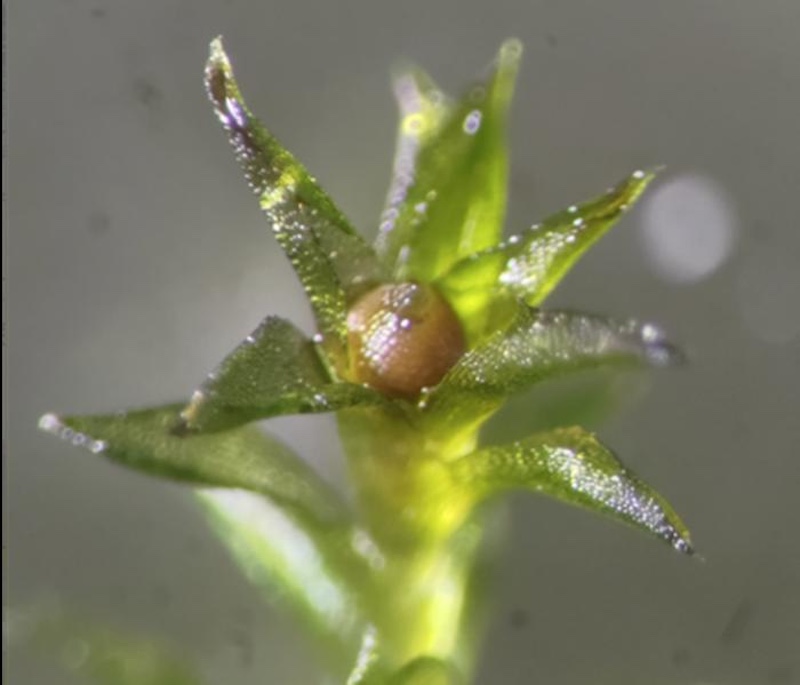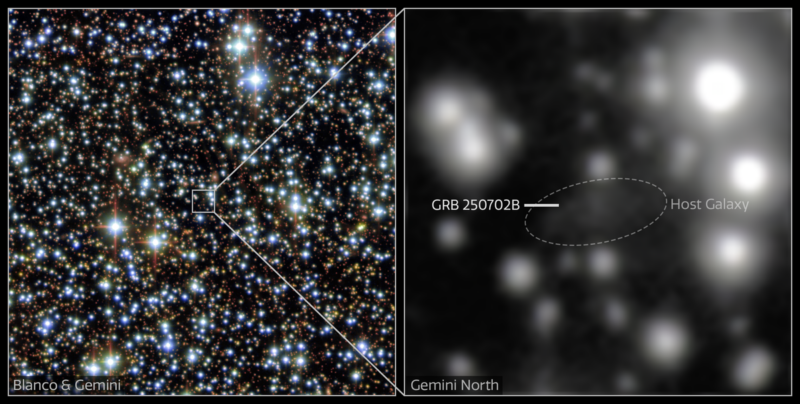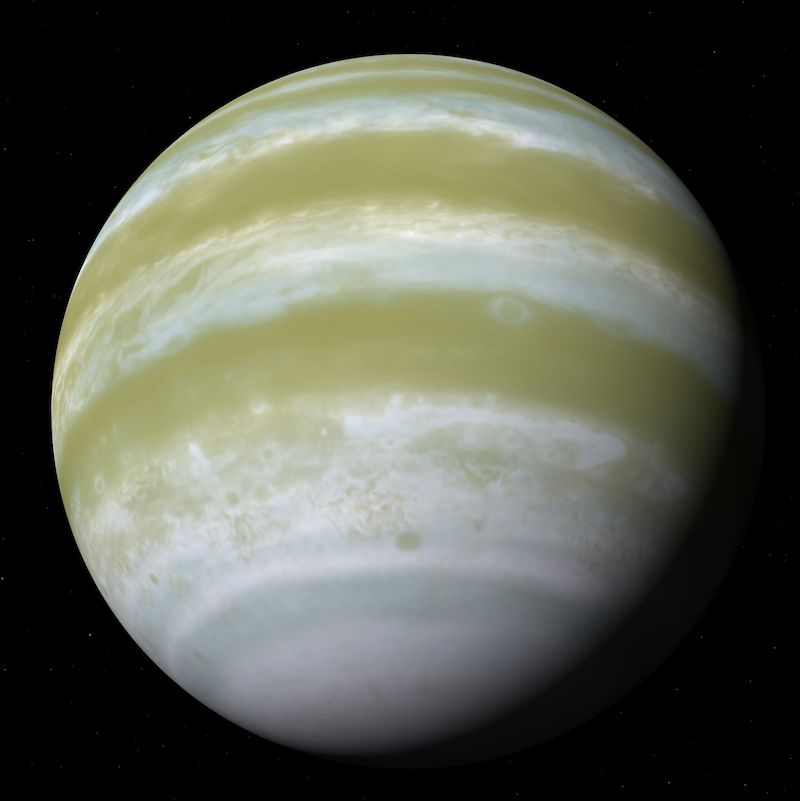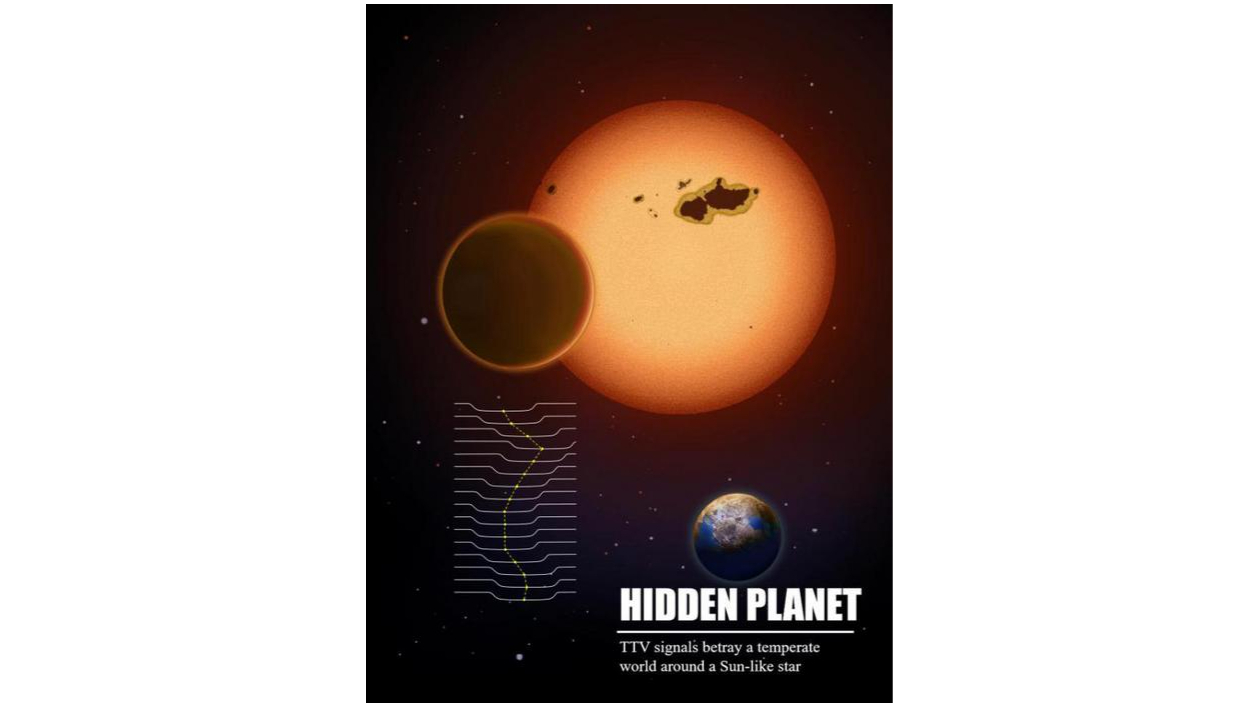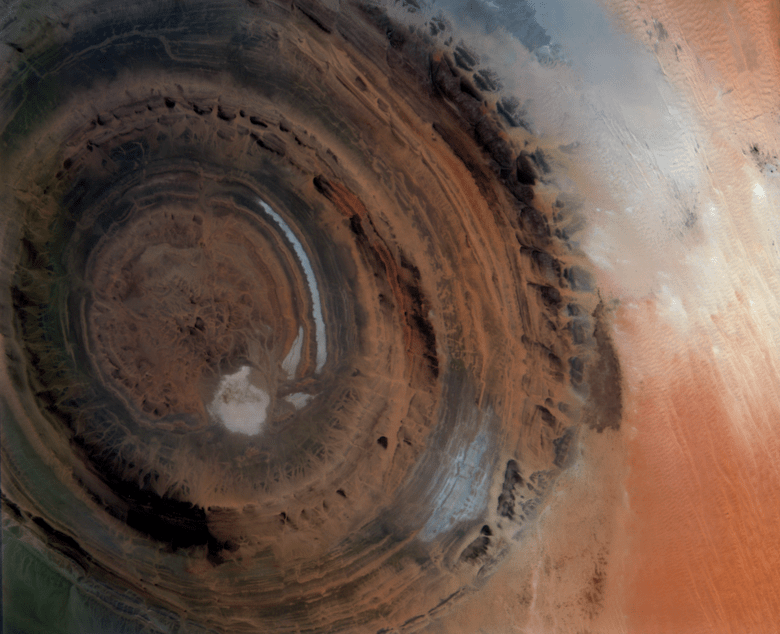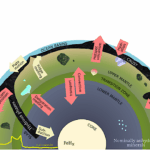Now Reading: Giant planet around tiny star challenges formation theories
-
01
Giant planet around tiny star challenges formation theories
Giant planet around tiny star challenges formation theories
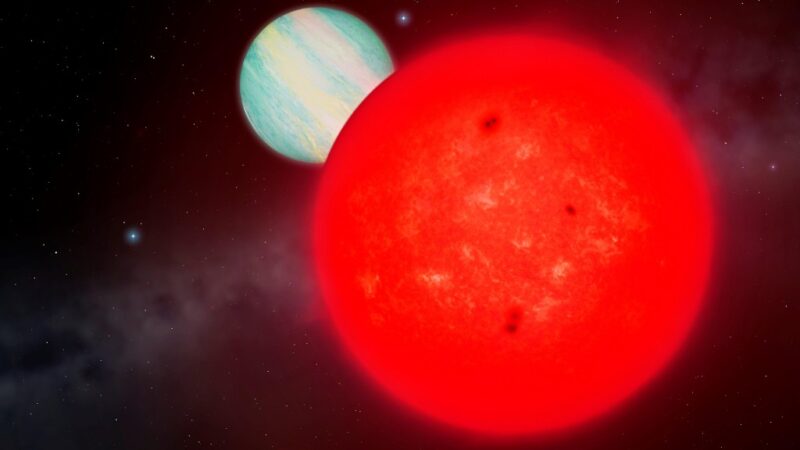

- Astronomers have found a giant planet orbiting a tiny star. The giant planet is Saturn-sized and the star is a red dwarf, with about 20% the mass of our sun.
- Theories of planet formation said that low-mass stars such as this red dwarf couldn’t form or retain giant planets.
- The discovery means astronomers will have to tweak their theories of planetary formation. And there may be many more giant planets out there than we thought.
The University of Liège published this original story on June 4, 2025. Edits by EarthSky.
A giant planet around a tiny star
An international team of astronomers, including researchers from Belgium, the U.K., Chile, and the U.S., said on June 4, 2025, that it has discovered a giant planet orbiting the smallest known star to host such a companion. It’s a finding that defies current theories of planet formation.
The host star, TOI-6894, is a red dwarf with only 20% the mass of the sun, typical of the most common stars in our galaxy. Until now, scientists didn’t think such low-mass stars were capable of forming or retaining giant planets. But the peer-reviewed Nature Astronomy published the study on June 4, 2024, showing the unmistakable signature of a giant planet – TOI-6894b – in orbit around this tiny star.
Detecting the giant planet
Scientists first identified this exceptional star-and-planet system in data from NASA’s Transiting Exoplanet Survey Satellite (TESS). It was part of a large search for giant planets around small stars, led by Edward Bryant from UCL’s Mullard Space Science Laboratory.
An extensive ground-based observation campaign then confirmed the planetary nature of the signal. It involved several telescopes, including those of the SPECULOOS and TRAPPIST projects, both led by the University of Liège.
Khalid Barkaoui, researcher on the SPECULOOS and TRAPPIST teams, oversaw these crucial follow-up observations. He explained:
The transit signal was unambiguous in our data. Our analysis ruled out all alternative explanations — the only viable scenario was that this tiny star hosts a Saturn-sized planet with an orbital period of just over three days. Additional observations confirmed that its mass is about half that of Saturn. This is clearly a giant planet.
TOI-6894 is now the smallest star known to host a transiting giant planet, with a radius 40% smaller than that of any previous such host.
Jamila Chouquar, who was an astronomer at ULiege at the time of the discovery, added:
We previously believed that stars this small couldn’t form or hold on to giant planets. But stars like TOI-6894 are the most common type in the Milky Way. So our discovery suggests there may be far more giant planets out there than we thought.
A challenge to planet formation models
According to current planet formation models, giant planets are rare around small stars. This is because their protoplanetary disks — the gas and dust reservoirs from which planets form — are thought to lack the material needed to build massive cores and accrete thick gas envelopes.
Mathilde Timmermans, member of the SPECULOOS team and ULiege astronomer at the time of the discovery, noted:
The existence of TOI-6894b is hard to reconcile with existing models. None can fully explain how it formed. This shows that our understanding is incomplete, and underscores the need to find more such planets. That’s exactly the goal of MANGO, a SPECULOOS sub-program led by myself and Dr. Georgina Dransfield at the University of Birmingham.
Michaël Gillon, FNRS Research Director at ULiege and head of the SPECULOOS and TRAPPIST programs, concluded:
This giant planet orbiting a tiny star reveals that planetary diversity in the galaxy is even greater than we imagined. Most of the targets observed by SPECULOOS and TRAPPIST are similar stars, or even smaller. So we’re well positioned to uncover more cosmic outliers in the years ahead.
Bottom line: Astronomers have discovered a giant planet orbiting a tiny star. This discovery challenges theories of planetary formation.
Source: A transiting giant planet in orbit around a 0.2-solar-mass host star
The post Giant planet around tiny star challenges formation theories first appeared on EarthSky.
Stay Informed With the Latest & Most Important News
Previous Post
Next Post
-
 012024 in Review: Highlights from NASA in Silicon Valley
012024 in Review: Highlights from NASA in Silicon Valley -
 02Panasonic Leica Summilux DG 15mm f/1.7 ASPH review
02Panasonic Leica Summilux DG 15mm f/1.7 ASPH review -
 03From Polymerization-Enabled Folding and Assembly to Chemical Evolution: Key Processes for Emergence of Functional Polymers in the Origin of Life
03From Polymerization-Enabled Folding and Assembly to Chemical Evolution: Key Processes for Emergence of Functional Polymers in the Origin of Life -
 04How New NASA, India Earth Satellite NISAR Will See Earth
04How New NASA, India Earth Satellite NISAR Will See Earth -
 05And Thus Begins A New Year For Life On Earth
05And Thus Begins A New Year For Life On Earth -
 06Astronomy Activation Ambassadors: A New Era
06Astronomy Activation Ambassadors: A New Era -
07SpaceX launch surge helps set new global launch record in 2024












